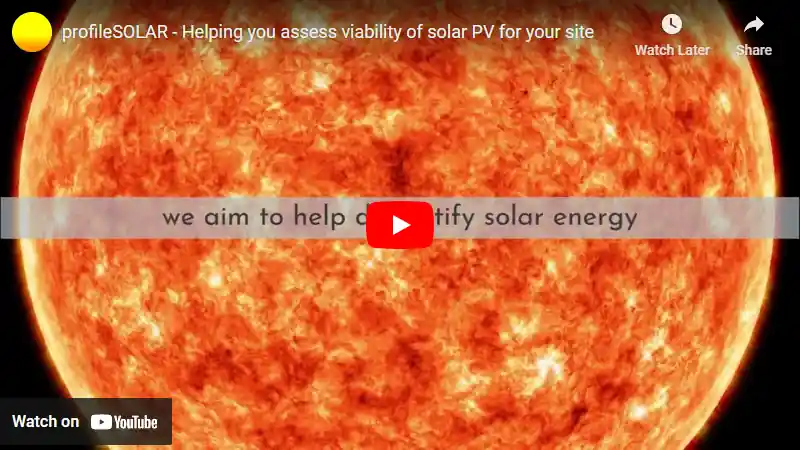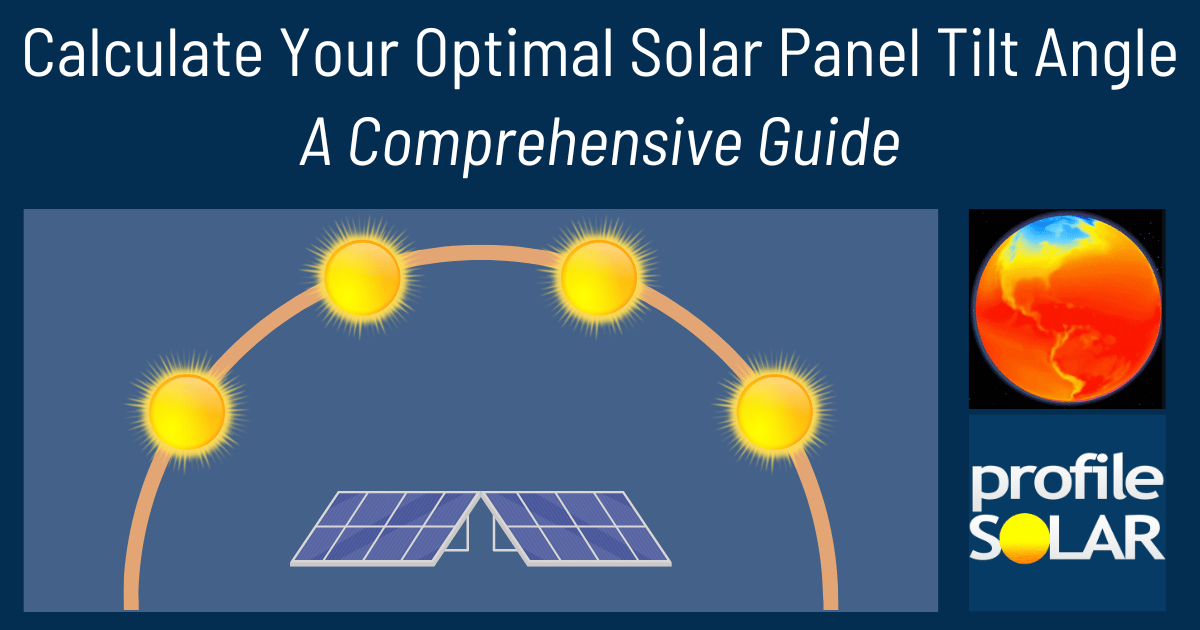

The location at Epsom, England, United Kingdom is moderately suitable for generating energy via solar photovoltaic (PV) systems year-round. The amount of electricity produced by a solar panel depends on the amount of sunlight it receives, which changes with the seasons.
In the summer, when days are longest and sunniest, each kilowatt of installed solar PV can produce around 5.13 kilowatt-hours (kWh) per day. This drops to about 2.31 kWh/day in autumn and further down to 1.07 kWh/day in winter when there's less sunlight due to shorter days and overcast weather often seen in UK winters. In spring, production increases again to around 4.36 kWh/day as daylight hours increase.
Therefore, the most ideal times for generating solar energy at this location are during summer and spring when there's more sunlight available.
For a fixed panel installation at this location, tilting panels at an angle of 44 degrees towards south will maximize total year-round production from your solar PV system because it allows panels to catch as much sunlight as possible throughout different times of the day and seasons.
However, various local factors could potentially hinder solar production here. For example:
1) Weather: The UK generally has a lot of cloudy or rainy days which can reduce the amount of direct sunlight reaching your panels.
2) Topography: If there are hills or tall buildings blocking direct sunlight from reaching your panels that would also impact their efficiency.
3) Environmental factors: Any dust or debris that accumulates on your panels can block some light from being absorbed.
To counter these issues:
- Regular cleaning helps keep dust/debris off your panels so they can absorb maximum light.
- Positioning your installation where it won't be shaded by nearby obstructions will help ensure they get most sun exposure possible.
- Using high-quality components like anti-reflective glass could help capture more light even on cloudy days.
In conclusion, while Epsom isn't the most ideal location for solar energy production due to its weather and latitude, it's still possible to generate a significant amount of energy with the right setup and maintenance.
Note: The Northern Temperate Zone extends from 35° latitude North up to 66.5° latitude.
So far, we have conducted calculations to evaluate the solar photovoltaic (PV) potential in 315 locations across United Kingdom. This analysis provides insights into each city/location's potential for harnessing solar energy through PV installations.
Link: Solar PV potential in United Kingdom by location
Become the exclusive sponsor for Epsom, United Kingdom!
Solar output per kW of installed solar PV by season in Epsom
Seasonal solar PV output for Latitude: 51.3304, Longitude: -0.268 (Epsom, United Kingdom), based on our analysis of 8760 hourly intervals of solar and meteorological data (one whole year) retrieved for that set of coordinates/location from NASA POWER (The Prediction of Worldwide Energy Resources) API:




Ideally tilt fixed solar panels 44° South in Epsom, United Kingdom
To maximize your solar PV system's energy output in Epsom, United Kingdom (Lat/Long 51.3304, -0.268) throughout the year, you should tilt your panels at an angle of 44° South for fixed panel installations.
As the Earth revolves around the Sun each year, the maximum angle of elevation of the Sun varies by +/- 23.45 degrees from its equinox elevation angle for a particular latitude. Finding the exact optimal angle to maximise solar PV production throughout the year can be challenging, but with careful consideration of historical solar energy and meteorological data for a certain location, it can be done precisely.
We use our own calculation, which incorporates NASA solar and meteorological data for the exact Lat/Long coordinates, to determine the ideal tilt angle of a solar panel that will yield maximum annual solar output. We calculate the optimal angle for each day of the year, taking into account its contribution to the yearly total PV potential at that specific location.

Seasonally adjusted solar panel tilt angles for Epsom, United Kingdom
If you can adjust the tilt angle of your solar PV panels, please refer to the seasonal tilt angles below for optimal solar energy production in Epsom, United Kingdom. As mentioned earlier, for fixed-panel solar PV installations, it is optimal to maintain a 44° South tilt angle throughout the year.
| Overall Best Summer Angle | Overall Best Autumn Angle | Overall Best Winter Angle | Overall Best Spring Angle |
|---|---|---|---|
| 35° South in Summer | 54° South in Autumn | 65° South in Winter | 43° South in Spring |
Our recommendations take into account more than just latitude and Earth's position in its elliptical orbit around the Sun. We also incorporate historical solar and meteorological data from NASA's Prediction of Worldwide Energy Resources (POWER) API to assign a weight to each ideal angle for each day based on its historical contribution to overall solar PV potential during a specific season.
This approach allows us to provide much more accurate recommendations than relying solely on latitude, as it considers unique weather conditions in different locations sharing the same latitude worldwide.
Topography for solar PV around Epsom, United Kingdom
Epsom is located in the southeast of England, within the county of Surrey. The topography around Epsom is generally flat to gently rolling, with some areas of low-lying hills. The area is primarily urban and suburban, but there are also large areas of open space including parkland and agricultural land.
In terms of solar PV suitability, flat or gently sloping areas are ideal as they allow for maximum sunlight exposure. Areas with little to no shade from trees or buildings are also preferable. As such, open spaces and agricultural lands around Epsom could be suitable for large-scale solar PV installations.
However, it's important to note that any potential site would need a thorough assessment considering factors such as local planning regulations, proximity to power grids for energy distribution, soil type (for ground-mounted systems), etc.
Some specific nearby locations that might be suitable based on their open space include:
1) Epsom Downs: This large area of chalk downland has few obstructions and could potentially accommodate a sizable solar farm.
2) Farmland around Chessington: There's a significant amount of farmland in this area which could also be suitable.
3) Industrial estates: There are several industrial estates in the vicinity where roof-mounted solar panels might be an option if ground space is limited.
Again these suggestions would require detailed feasibility studies before any decisions could be made.
United Kingdom solar PV Stats as a country
United Kingdom ranks 14th in the world for cumulative solar PV capacity, with 13,689 total MW's of solar PV installed. This means that 4.00% of United Kingdom's total energy as a country comes from solar PV (that's 20th in the world). Each year United Kingdom is generating 203 Watts from solar PV per capita (United Kingdom ranks 25th in the world for solar PV Watts generated per capita). [source]
Are there incentives for businesses to install solar in United Kingdom?
Yes, there are several incentives for businesses wanting to install solar energy in the United Kingdom. The UK government offers a Feed-in Tariff (FiT) scheme which pays businesses for every unit of electricity they generate from their solar panels. Additionally, businesses may be eligible for tax reliefs such as Enhanced Capital Allowances and Renewable Heat Incentives. Finally, some local authorities offer grants or other financial support to help businesses with the cost of installing solar energy systems.
Do you have more up to date information than this on incentives towards solar PV projects in United Kingdom? Please reach out to us and help us keep this information current. Thanks!
Feeling generous?

Share this with your friends!


Compare this location to others worldwide for solar PV potential
The solar PV analyses available on our website, including this one, are offered as a free service to the global community. Our aim is to provide education and aid informed decision-making regarding solar PV installations.
However, please note that these analyses are general guidance and may not meet specific project requirements. For in-depth, tailored forecasts and analysis crucial for feasibility studies or when pursuing maximum ROI from your solar projects, feel free to contact us; we offer comprehensive consulting services expressly for this purpose.
Helping you assess viability of solar PV for your site
Calculate Your Optimal Solar Panel Tilt Angle: A Comprehensive Guide
Enhance your solar panel's performance with our in-depth guide. Determine the best tilt angle using hard data, debunk common misunderstandings, and gain insight into how your specific location affects solar energy production.







